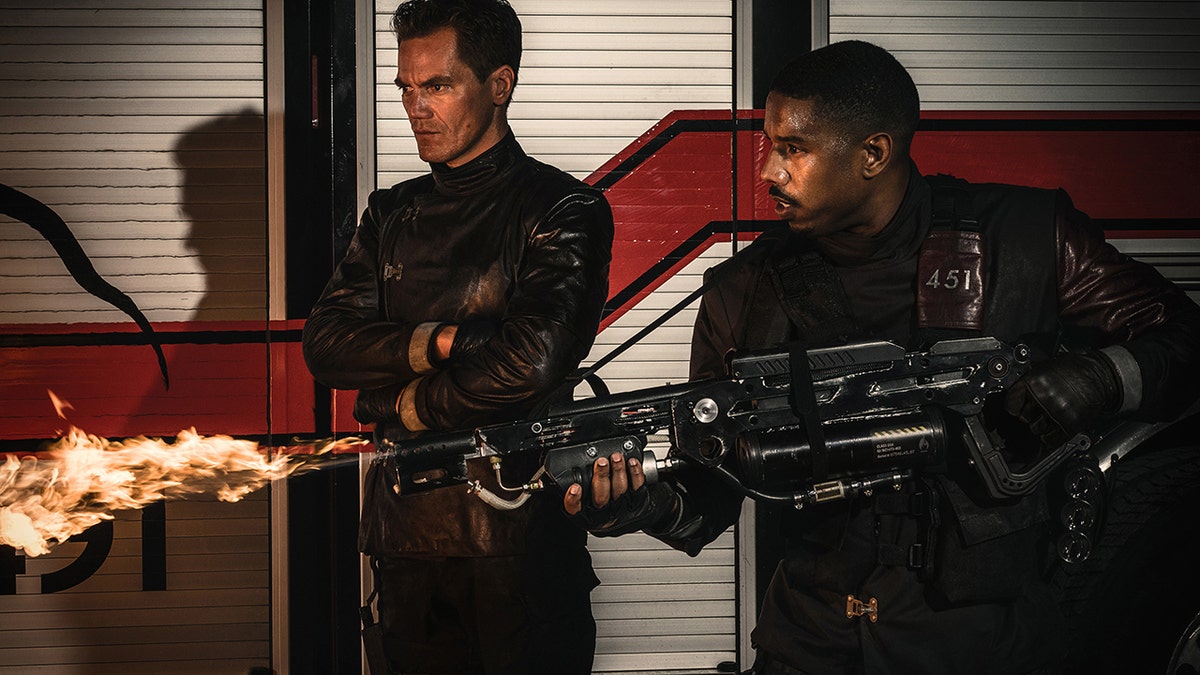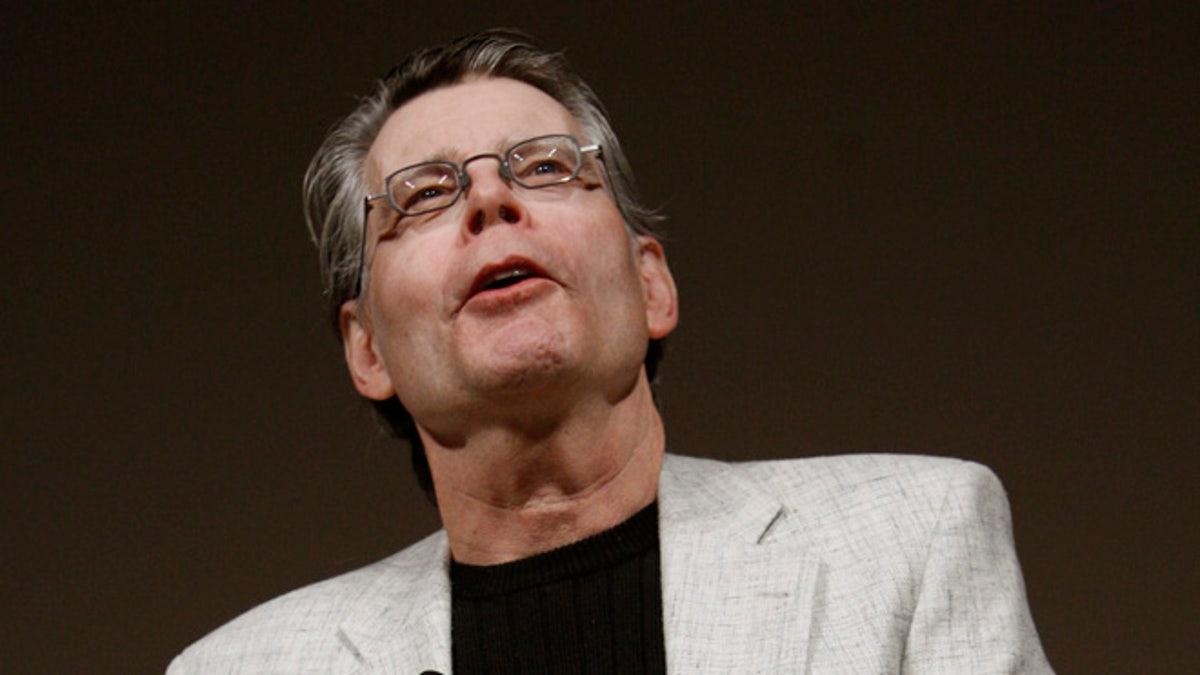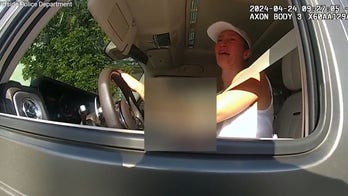
Author Stephen King stopped selling his controversial book "Rage," originally published under pen name Richard Bachman, after it inspired several school shooters. (AP)
With Ray Bradbury's novel about a society where books are outlawed coming alive in HBO's new film "Fahrenheit 451," attention has returned to one of the most difficult books to come by in the United States.
Stephen King is one of America’s most prolific authors — countless of his stories and books can be found in almost any retailer in the country. However, there’s one novel he has decided to let fall out of publication due to the real-life crimes it purportedly spawned.
The average King fan may not be familiar with the 1977 book “Rage.” Originally published under his pen name, Richard Bachman, King wrote the novel in 1966 while he was still in high school.

Stephen King originally published "Rage" on Sept. 13, 1977.
In it, a young man named Charlie Decker is called into the principal’s office of his high school after assaulting a teacher. He goes on an expletive-filled tirade for reasons he doesn’t understand, prompting his expulsion. Decker then goes to his locker to retrieve a semi-automatic pistol, burns the remaining contents and kills two other faculty members before taking his algebra class hostage.
What ensues is a standoff in which the students who had begun as hostages become unwitting accomplices as a sort of Stockholm Syndrome sets in and they begin to identify more with their captor than wuth those trying to end the conflict.
King let the book fall out of publication in 1998 after real-life tragedies allegedly inspired by “Rage” and made him feel morally obligated to write it. The book existed for a time in a 1985 collection of novels called “The Bachman Books,” which also included “The Long Walk,” “Roadwork” and “The Running Man.” Eventually, prints of “The Bachman Books” dwindled from four stories to three as the author allowed “Rage” to die a quiet death in the publishing world.
Today, curious readers can still get their hands on a copy, but they have to be willing to pay between $500 - $700 on Amazon to do so.

Michael Shannon (left) and Michael B. Jordan in HBO's "Fahrenheit 451." The film is based off of the Ray Bradbury novel of the same name which is about a future American society where books are outlawed and burned. (HBO)
As Business Insider notes, the novel was number two on BookFinder’s 2013 list of out-of-print books that are still in high demand. To this day, the novel is still considered one of the most controversial books in the U.S.
Why then did King, the mind behind twisted and horrific stories like “Misery,” “It” and “Pet Cemetery,” decide to let this book fall out of print? The answer can be traced back to Dec. 1, 1997, at Heath High School in Paducah, Kentucky. Fourteen-year-old Michael Carneal brought three guns to school and opened fire on a group of students standing in a prayer circle. Three were killed and five were injured, with one unable to walk again. According to a local report, Carneal then dropped his weapon and surrendered to the school principal.
Police would later discover a copy of “Rage” in Carneal’s locker. It was the fourth school gun violence incident in which the authorities found the gunman had been exposed to, and possibly influenced by, the now out-of-print King novel.
In 1996, 14-year-old Barry Dale Loukaitis killed his algebra teacher and two students before being disarmed by a faculty member he tried to take hostage at Frontier Middle School in Moses Lake, Wash. He allegedly claimed that he was inspired by “Rage” and modeled his life after Charlie Decker.
In 1989, 17-year-old Dustin Pierce took a classroom of 11 students hostage at gunpoint in Jackson County High School in McKee, Kentucky while reportedly trying to recreate the plot of “Rage.” After a nine-hour standoff, he surrendered to police.

Stephen King wrote "Rage" under his pen name Richard Bachman. (Reuters)
In 1987, Jeffrey Lyne Cox held 60 classmates at gunpoint at San Gabriel High School in California before being disarmed by some of the students. He was known to have read “Rage” multiple times The Los Angeles Times reported.
Shortly after the 1998 incident, King is said to have called his publisher to demand the book be taken out of print. The publisher reportedly agreed.
King did not immediately respond to Fox News’ request to discuss the book. However, shortly after the deadly school shooting in Newtown, Conn., in 2012 at Sandy Hook Elementary School, King published a 25-page nonfiction essay titled “Guns” in which he explained his reasoning for pulling the novel.
“It took more than one slim novel to cause (the shooters) to do what they did. These were unhappy boys with deep psychological problems, boys who were bullied at school and bruised at home by parental neglect or outright abuse,” he wrote in “Guns,” (via USA Today). “My book did not break (them) or turn them into killers; they found something in my book that spoke to them because they were already broken. Yet I did see ‘Rage’ as a possible accelerant which is why I pulled it from sale. You don’t leave a can of gasoline where a boy with firebug tendencies can lay hands on it.”
The author, now 70 years old, went on to explain that he felt no legal pressure to pull the book, only a moral obligation that he extended to his fellow gun owners.
“I was protected under the First Amendment, and the law couldn't demand it. I pulled it because in my judgment it might be hurting people, and that made it the responsible thing to do,” he wrote. “Assault weapons will remain readily available to crazy people until the powerful pro-gun forces in this country decide to do a similar turnaround. They must accept responsibility, recognizing that responsibility is not the same as culpability."
Today, “Rage” is only available to those with deep pockets and an even deeper curiosity — something King continues to support. Despite a library of stories based on fictitious murder and macabre plots, King is willing to let “Rage,” which happens to be one of his earliest works, rest in peace for fear that it will cause real-life murder and violence if made available again.






